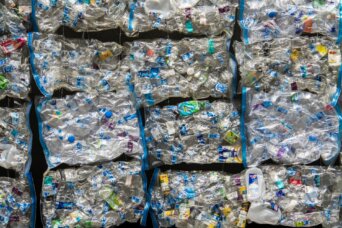- About
- Topics
- Picks
- Audio
- Story
- In-Depth
- Opinion
- News
- Donate
- Signup for our newsletterOur Editors' Best Picks.Send
Read, Debate: Engage.
| topic: | Pollution |
|---|---|
| located: | India |
| editor: | Hanan Zaffar |
In a significant decision to control environmental pollution, India has banned several single-use plastic items beginning this July. If successfully implemented, the move will result in the elimination of large amounts of plastic in a country that produces approximately 5.5 million tonnes of single-use plastic per year. While the move is praised for its intent, experts have raised concerns about the decision's practicality and the economic impact it may have on certain groups.
The new rules ban the production, importation, stocking, distribution and use of 21 identified single-use plastic items. However, items like soft drink bottles, thick plastic carry bags and multi-layered plastic packaged items are exempted from the list. As per the notification issued by the government, the ban is to be implemented with immediate effect.
Even after the notification, there are still many types of such plastic items that can be used, following the government's latest decision. The intent seems to reduce plastic production and consumption in the country in a phased manner. Despite the fact that the ban does not cover all the single-use plastics used in the country, the decision will have a considerable effect on different aspects related to listed single-use plastics.
The decision may face challenges on three fronts: implementation, alternative products and financial issues for those who rely on listed single-use plastic. Banned single-use plastics like straws, disposable cutlery and packaging films are widely used throughout the country. The market and its participants have easily adjusted to the use of these plastics. There are almost no or negligible market alternatives to these items. It would be difficult to break such patterns and shift to relatively inconvenient alternatives across India.
Not astonishingly, there are already numerous banned items that are widely available in Indian markets, so implementing a ban on these many items will be difficult.
Another challenge will be the enforcement by authorities throughout India's small and large markets. Eliminating these plastics from urban areas may be possible, but doing so in rural and remote areas, where municipal enforcement teams are scant and weak, would require a large, extra effort. The ban would also require the use of alternatives that are as inexpensive and well-suited as plastic. Most alternatives, such as bamboo, paper and cloth, may not be as readily available or affordable, making the ban difficult for those in businesses.
Finally, if implemented, the ban would affect those involved in the manufacturing, distribution and sale of such plastics the most. India is the third largest producer of single-use plastics, and its distribution is widespread. While the decision directly affects the plastics industry, it also has an impact on others that use single-use plastics, such as the cosmetics, food, and electronic industries. It should not be difficult to comprehend the financial consequences for them associated with this prohibition.
Because of the role of plastics in pollution, the decision is laudatory in many ways. This, however, should be done in a well-planned manner that considers the social, economic and environmental aspects of the decision. With no real alternative strategies in place, the ban and its intended results, at least as of now, seem to be far-fetched.
Photo by Nick Fewings

